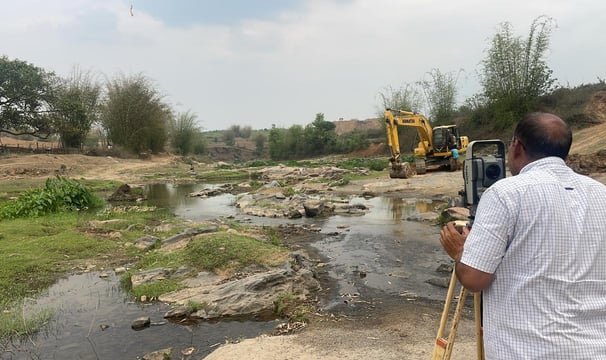Construction Projects
Expertise in building roads, bridges, dams, buildings and land development.


Dam Construction
Empowering youth through training and placement opportunities.
Dam construction is a complex and large-scale civil engineering process aimed at building a barrier across a river or stream to store water, control flooding, generate hydroelectric power, or support irrigation. The process begins with thorough site investigations, including geological surveys and hydrological studies, to ensure the location is suitable for withstanding the immense pressure of stored water. Once the design is finalized—whether it's an embankment, gravity, arch, or buttress dam—construction proceeds in phases such as diversion of the river, foundation preparation, and placement of construction materials like concrete, rock, or earth. Modern dam construction involves advanced machinery, strict safety standards, and environmental impact assessments to ensure structural stability and ecological balance. Upon completion, dams contribute significantly to water management, energy generation, and economic development in the region.


Road Construction
Innovative solutions for durable and sustainable road infrastructure.
Road construction is a crucial aspect of infrastructure development that facilitates transportation, enhances connectivity, and supports economic growth. The process involves several stages, including surveying, planning, excavation, subgrade preparation, laying the base and surface layers, and finally, paving and finishing. High-quality materials such as aggregates, bitumen, and concrete are used to ensure durability and resistance to traffic load and weather conditions. Modern road construction also emphasizes sustainability, safety, and efficiency, often incorporating advanced machinery and eco-friendly practices. Well-constructed roads not only reduce travel time and vehicle operating costs but also contribute significantly to regional development and public welfare.




Bridge Engineering
Designing and constructing bridges with safety and efficiency.
Bridge engineering is a specialized branch of civil engineering that focuses on the design, construction, and maintenance of bridges to provide safe passage over obstacles such as rivers, valleys, or roads. It combines principles of structural engineering, materials science, and geotechnics to ensure durability, load-bearing capacity, and stability. The process begins with site analysis and selecting the most suitable bridge type—such as beam, arch, suspension, cable-stayed, or truss—based on environmental conditions, span length, and traffic requirements. Engineers then design structural components, including foundations, piers, abutments, and superstructures, using materials like steel, concrete, or composite elements. Modern bridge engineering incorporates advanced simulation tools and construction techniques to enhance safety, sustainability, and efficiency. Regular inspections and maintenance are essential to extend the lifespan and ensure the continuous safe use of bridges in transportation infrastructure.
Building Projects
Creating modern buildings that meet diverse community needs.
Building construction is the process of creating structures for residential, commercial, or industrial use, involving a systematic approach from planning to completion. It begins with architectural design and structural planning, where engineers and architects work together to ensure the building meets functional, aesthetic, and safety standards. The construction process includes several key stages: site preparation, foundation work, structural framing, roofing, and the installation of electrical, plumbing, and HVAC systems. Materials commonly used include concrete, steel, bricks, wood, and glass, depending on the building's purpose and design. Modern building construction also emphasizes sustainability, energy efficiency, and the use of smart technologies. Strict adherence to building codes, safety regulations, and quality control ensures that the finished structure is durable, safe, and fit for its intended use.
→
→
→
→


Land Development
To transform raw land into ready-to-use property through planning, infrastructure, and construction.
Land development is the process of preparing raw land for construction and other uses such as residential, commercial, industrial, or recreational projects. It involves transforming undeveloped or underutilized land into a usable and valuable property through planning, design, and construction. The process typically begins with land surveying, zoning analysis, and obtaining necessary permits. This is followed by site clearing, grading, installation of infrastructure like roads, drainage systems, water supply, sewage lines, and utility connections. Environmental impact assessments are often conducted to ensure sustainable and responsible development. Land development requires coordination among engineers, planners, architects, and government authorities to ensure compliance with regulations and alignment with urban planning goals. Proper land development enhances property value, supports community growth, and contributes to economic development.
The construction skills I gained here transformed my career. Their placement support is exceptional, helping many youths like me find great opportunities in the industry.
Rahul Sharma

★★★★★